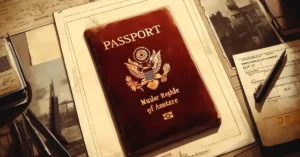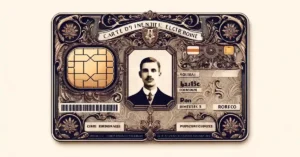Introduction
In a world where secure communications are becoming a priority, document verification is an essential step. Whether opening a bank account, entering into an employment contract, renting a property, or accessing certain public services, the documents presented must be authentic, valid, and compliant. Document verification protects businesses and institutions against the risk of fraud, while guaranteeing individuals the legitimacy of the actions taken.
Today, with the tightening of KYC (Know Your Customer) regulations and anti-money laundering (AML/CFT) obligations, document verification is becoming a strategic issue. Banks, insurance companies, digital platforms, and even public bodies are required to carry out rigorous checks. Beyond legal obligations, it’s a matter of trust: ensuring that an individual is who they claim to be, or that they have the resources they declare.
Why check the authenticity of documents?
Document verification has become a critical issue in a world where financial, legal, and administrative transactions rely on trust. A simple falsified document can jeopardize the security of a transaction, the validity of a contract, or the integrity of a system. Whether you’re a company seeking to comply with legal obligations, a professional facing the risk of fraud, or an individual seeking to protect their interests, document verification helps you secure your processes.
It is an essential barrier against :
- false documents,
- stolen identities,
- manipulated financial information.
It ensures that the people or entities you interact with are who they claim to be, and that the documents provided are authentic and reliable. By acting early, you avoid serious financial and legal consequences.
Common signs to know if a document is reliable
Document fraud comes in many forms, but some common signs are :
- Falsification of the MRZ : in the case of identity documents, a misaligned, inconsistent area or one containing formatting errors is often indicative of attempted fraud.
- Font inconsistencies : Fonts that are offset or do not match those before or after them, especially in important areas where amounts or value information appear.
- Graphic anomalies : poor print quality, missing or poorly positioned holograms, or shifted colors should raise alarms.
- Date inconsistencies : An expired date, a date of birth that does not match the cardholder’s appearance are signs to investigate.
Risks associated with the lack of document expertise
Risks for businesses
For businesses, failure to verify documents can have serious financial and legal consequences. Accepting a falsified document can lead to unpaid bills, contractual fraud, or even loss of assets in the context of improperly granted credit or services. Beyond financial losses, the company may be held liable for failure to comply with legal obligations, particularly in regulated sectors subject to KYC (Know Your Customer) or anti-money laundering (AML/CFT) regulations. Authorities can then impose fines or even criminal sanctions in the event of proven negligence. The company’s reputation can also be seriously damaged, affecting the trust of customers and partners.
Risks for individuals
For individuals, the risks are just as significant. Presenting a falsified or non-compliant document constitutes an offense that can lead to criminal penalties : fines, administrative bans, or even prison sentences, depending on the severity of the offense. But even without fraudulent intent, accepting or using an unverified document exposes you to disputes : canceled contracts, refused procedures, or financial losses (fraudulent rentals, sales scams, etc.). Failing to verify the authenticity of a document in your own procedures runs the risk of becoming a victim of fraud or entering into a complex legal situation. Vigilance is therefore essential, even for everyday procedures.
Types of documents whose authenticity can be verified
Identity documents
Identity documents are the first documents to be verified in most procedures. National Identity Cards, passports, and driver’s licenses: these documents allow a person’s identity, nationality, and even right of residence to be established with certainty. Each document has its own characteristics: visual security features (holograms, watermarks, microprints), machine-readable zones (MRZs), and, for the most recent versions, electronic chips containing biometric data.
The document verification process varies depending on the type and country of issue. It is essential to know the specifics of each format to detect forgery attempts.
👉 [Read our complete guide to verifying identity documents]
Proof of resources
In many situations, proving one’s identity isn’t enough. Financial capacity or tax compliance must also be demonstrated. Pay slips attest to a stable income, bank statements provide an overview of financial transactions, while tax notices confirm the tax return. These documents are often required for credit applications, rentals, or administrative procedures.
Like identity documents, proof of income documents can be subject to forgery. Particular vigilance is required to verify their authenticity: consistency of amounts, identification of the issuer, validity dates, etc.
👉 [Read our complete guide on checking French pay slips]
Document validation methods
Visual verification
The simplest and most widely used method is to visually examine the document. This involves observing the embedded physical security features: holograms, watermarks, UV inks, microtexts. A rigorous visual inspection may be sufficient to detect gross forgeries or altered documents.
Verification of documents via digital means
Thanks to technology, verification has become faster and more reliable. OCR (Optical Character Recognition) allows for the automatic extraction of text data from a document and comparison with expected data. MRZ, present on many identity documents, allows for rapid and standardized reading. Any inconsistency between the visible data and the MRZ is often an indication of fraud.
Verification of documents against official databases
The most secure method is to directly query the issuing authorities’ databases. Some administrations or companies offer services that allow you to verify the validity of a document using a unique number or QR code. This type of verification guarantees the document’s authenticity because it is based on official information.
Check documents by country
Each country has its own standards for official documents. Formats, validity periods, and security features: it’s essential to understand these specifics to perform reliable document verification.
In France, the biometric national identity card and passport incorporate advanced features. In Algeria, older paper cards coexist with more secure biometric versions. In Belgium, the electronic eID card is widely used, while in Canada, the driver’s license often serves as the primary form of identification.
Recommended document verification tools
To simplify your process, we provide a suite of tools tailored to document verification. These solutions automatically read and verify MRZ documents, process OCR data, and detect inconsistencies. Whether you’re a professional or an individual, our tools are designed to provide you with fast, reliable, and accessible verification.
👉 [Discover our service for verifying proof of resources via web application]
👉 [Discover our service for verifying proof of resources via API]
👉 [Discover our service to check the proof of individual resources on the shop]
Find out how to check your documents
Want to go further? We offer a comprehensive selection of resources to help you delve deeper into every aspect of document verification. Whether you’re looking to validate an ID card, passport, or proof of income, our guides and tools will guide you step by step.



